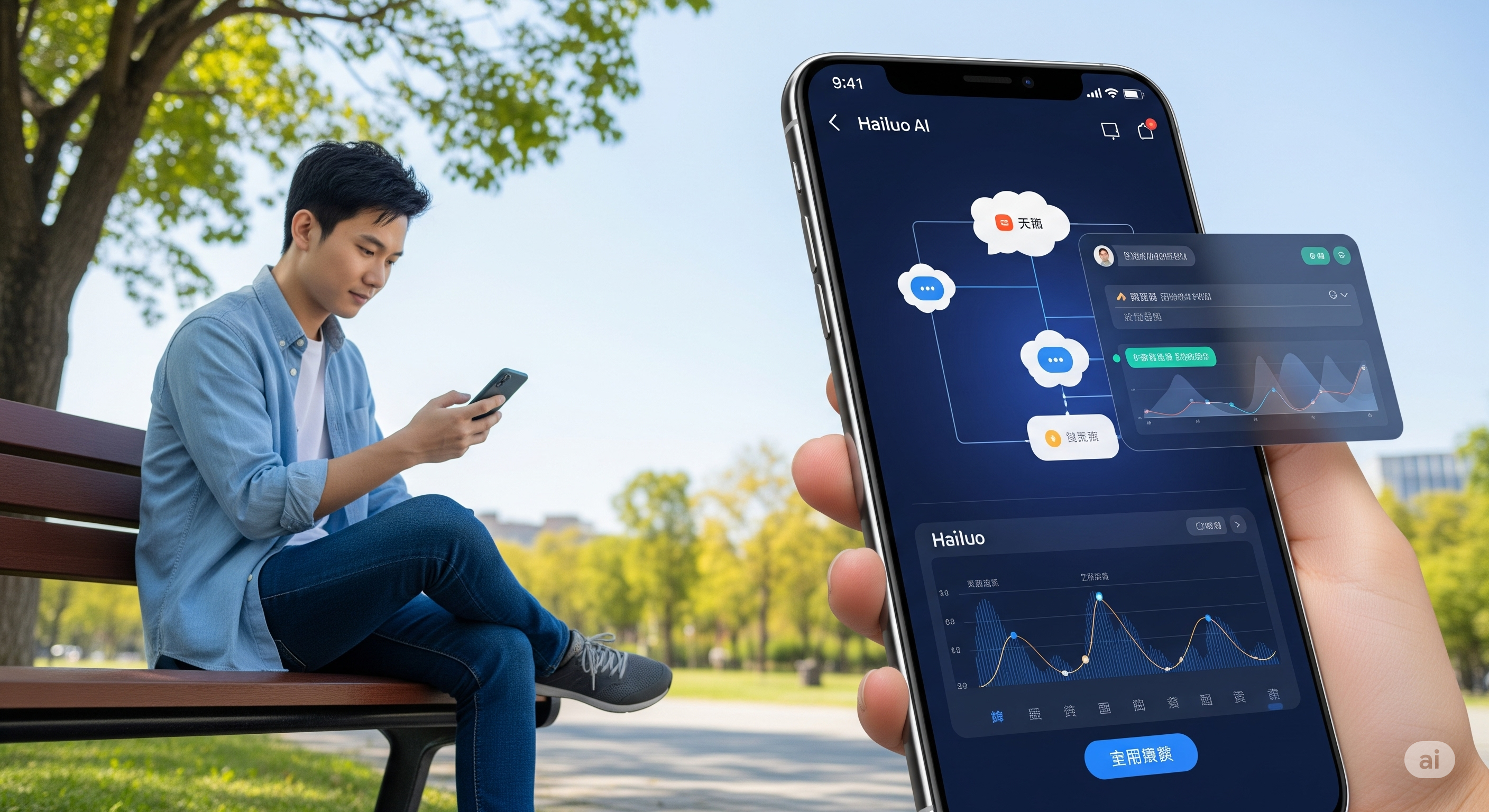
Hailuo AI: The Chatbot That Thinks (Almost) Like You
Introduction: I Wasn’t Looking for a Chatbot, But I Found a Conversational Genius
A few months ago, I stumbled across a quiet little gem called Hailuo AI.
I wasn’t looking for another AI chatbot. Honestly, between ChatGPT, Claude, Gemini, and Pi, I thought the space was getting saturated. But something about Hailuo felt… different. It wasn’t trying to act like your assistant or your therapist. It was more like chatting with a knowledgeable friend who wasn’t trying to show off.
What caught my attention? Its conversations weren’t just intelligent—they were emotionally aware, nuanced, and refreshingly grounded.
So I dove in. And now? I think Hailuo is one of the most underrated AI tools of 2025.
Let’s break down why it matters, who it’s for, and why you might love using it—even if you already have a favorite AI.
1. So, What Exactly Is Hailuo AI?
At its core, Hailuo AI is a multilingual conversational AI designed to be more human, more intuitive, and more emotionally intelligent than traditional chatbots.
It’s powered by cutting-edge LLMs (large language models), but with a twist: it places a big emphasis on natural dialogue flow, empathy, and contextual awareness. In simpler terms, it doesn’t just respond—it understands the why behind your words.
And here’s what’s really cool: Hailuo isn’t limited to English.
It’s one of the few AI tools that natively supports multilingual conversations with cultural sensitivity, not just translation. I tested it in Hindi and Spanish, and it didn't just 'translate' my questions—it responded in culturally relevant ways. That’s rare.
🔗 Try it out here: https://hailuoai.com
2. What Makes It Stand Out from ChatGPT, Gemini, or Claude?
Most AI tools are either overly robotic or overly emotional.
Hailuo finds a sweet spot. Here’s a quick comparison of how it feels:
| Feature | Hailuo AI | ChatGPT / Gemini |
|---|---|---|
| Conversation Flow | Feels like human back-and-forth | Often one-sided or prompt-driven |
| Multilingual Skills | Emotionally aware across languages | Can miss cultural tone nuances |
| Empathy & Memory | Remembers tone/context naturally | Varies depending on model |
| Speed & Responsiveness | Fast and crisp | Sometimes slow on mobile |
Also—Hailuo is voice-enabled by default. That’s a game-changer for accessibility and hands-free productivity.
You can chat with it like you would with Siri, but it actually understands nuance and emotion.
📖 Related: The Rise of Empathetic AI Assistants
3. Real Use Cases: Who’s Using Hailuo and Why?
This is where it gets personal.

I’ve seen startup founders using Hailuo to refine pitch decks through discussion—just like brainstorming with a partner.
A career coach friend told me she uses it during live Zoom calls (via screen share) to quickly rephrase CV bullet points or LinkedIn summaries for clients.
One teacher I know uses it to translate lesson plans between English and Kannada—without losing tone or intent.
Personally? I’ve used it for journaling. Sounds weird, but it helps me talk through thoughts out loud—Hailuo listens, responds softly, and occasionally drops insight bombs I didn’t see coming.
🔗 Real experiences shared on Product Hunt
4. Why Multilingual AI Is a Game-Changer (Especially in India)
If you’re from a multilingual country like India, you know how frustrating it can be to switch between English, Hindi, or regional languages depending on the platform.
What Hailuo nails is contextual switch.
- You can start in English, switch to Hinglish, drop into Hindi, and Hailuo still gets it.
- You ask a question about Tamil culture in English—and it responds in a Tamil-aware tone.
That opens doors for rural education, mental health support, and non-English small business owners who want to embrace AI but feel left out.
Also worth noting: Hailuo is being used in Southeast Asia, Latin America, and Africa—places where many global AI tools struggle with localization.
📚 Read more: How Multilingual AI Empowers Emerging Economies
5. What Hailuo Gets Right That Others Still Miss
Beyond the tech, Hailuo gets something right that many bigger platforms haven’t nailed: trust and transparency.
- It tells you what model it’s using.
- It doesn’t overpromise features it can’t deliver.
- It’s privacy-first—all your data stays local unless you opt in to share.
And it has a simple UI that works beautifully on mobile. No distractions, no upsells, no 17-click onboarding.
Think: clean, minimalist, and focused on conversation—not features.
That’s why it’s gaining traction among older users, non-tech audiences, and even therapists looking for conversational journaling tools.
6. Room for Growth? Yes. But That’s Part of the Charm
No tool is perfect. Hailuo still has room to grow.
- It doesn’t do full document creation like Notion AI or ChatGPT
- It’s more of a conversation partner than a productivity engine
- No plugins or apps (yet) for deeper workflows
But honestly? That’s what makes it refreshing.
Instead of trying to be everything, Hailuo focuses on one thing: conversation that feels real. And it does that very well.
If you want a deeply technical AI, this isn’t it. But if you want one that’s emotionally intelligent, intuitive, and pleasant to use? You’re in the right place.
🧠 Future roadmap: Hailuo AI Blog
Final Thoughts: The AI That Feels Like It’s Listening
If you’ve been feeling overwhelmed by all the “do-it-all” AI tools out there, Hailuo AI is a breath of fresh air.
It doesn’t try to dazzle you with 50 features. It just has one goal: to make your digital conversations more human.
And it succeeds.
I’ve talked to it late at night when I couldn’t focus. I’ve used it during brainstorming jams. I’ve even recommended it to my mom—and she loves it because it “feels patient.”
So yeah, Hailuo might not be the loudest name in AI right now. But if it keeps going the way it’s going? It just might be the most lovable.
👉 Try Hailuo here: hailuoai.com



